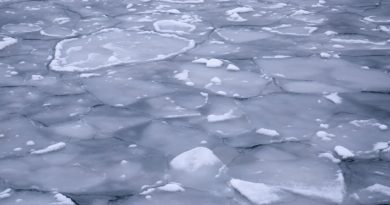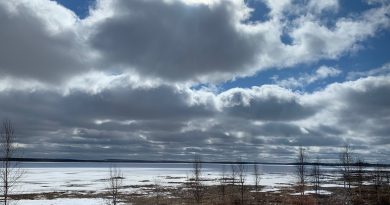Shrinking Arctic ice forces walruses ashore in Alaska

Shrinking summer sea ice has forced thousands of walruses onto land near the village of Point Lay, Alaska — on the shores of the Chukchi Sea, 190 miles southwest of Barrow.
While the walrus gathering represents a great opportunity for federal scientists to easily tag the animals with tracking devices, the animals’ presence so far from the ice flows where they normally forage for food is being seen as another sign of a rapidly warming Arctic. Walruses can sometimes gather on shore, but until 2007, they had never before been seen in the area around Point Lay, far above the Arctic Circle at the northwestern edge of the state.
The Pacific walrus is a huge animal. Males can weigh as much as two tons. Females are smaller. During late autumn, the females and their calves can usually be found near the Hanna Shoal, a relatively shallow area of the Chukchi Sea, about 100 miles northwest of Point Lay. They spread out on ice floes and use the ice for rest, much as a diver would use a boat — between forays to the deep for food like clams, worms, and other bottom-dwelling prey. Walruses, despite being marine mammals, are not endurance swimmers. Their dense bodies don’t float well, so the animals need ice near their feeding grounds.
That ice recedes in summer, but enough of it usually remains to provide the walruses with places to take a break from swimming and diving. Beginning in 2007, however, much like this year, the ice completely disappeared — forcing the animals to shore — where they gather in huge herds. If something startles the herd, young walruses can be trampled and killed by their much-bigger mothers. An aerial survey spotted as many as 4,000 of the animals onshore near Point Lay on Sept. 14.
“What is striking is the sheer magnitude and the drama of the haul-out,” said Nick Sundt, a communication director for the World Wildlife Fund. The WWF is just one of the conservation groups that want the U.S. government to list the walruses as threatened, due to impacts posed by climate change to their habitat.
‘Canary in a coal mine’
Sundt likens the walruses to the proverbial “canary in a coal mine,” saying the new behaviors of the big pinnipeds are just another example of changes being seen across the quickly heating Arctic region.
The surface temperature of the world’s oceans has on average risen about 1.4 degrees Fahrenheit since 1901. The Arctic on average has been warming at a faster rate than the rest of the world since observations began there in the 1950s. That increase has led to less and less sea ice cover in the region during the summer. While it has opened up the Arctic to resource exploration and transportation, the warmer ocean has also affected the flora and fauna — especially the walruses.
Except for 2008, each year since 2007, the walruses have shown up near Point Lay. Those so-called haul-outs have coincided with a complete September loss of sea ice in the Hanna Shoal area — where the animals usually feed until they head south toward the Bering Sea for the winter.
“It is very clear that once the sea ice leaves the continental shelf, the walruses come ashore,” said Kerry Oakley, a supervisory biologist with the U.S. Geological Survey. The USGS has been tagging the animals to see where they travel and how far they have to swim to get there. A team of biologists is currently in Point Lay, tagging the group that came ashore last week. The USGS maintains a website where the animals can be tracked in real time.
Their numbers have remained fairly steady over the last few decades, with more than 200,000 walruses believed to be in the Arctic. But the loss of sea ice is undeniably changing their behavior. Whether it will affect their overall numbers is a question that will be debated — much as the fate of the polar bears — by environmentalists, resource developers, and shipping interests for years to come.
Contact Sean Doogan at sean(at)alaskadispatch.com


